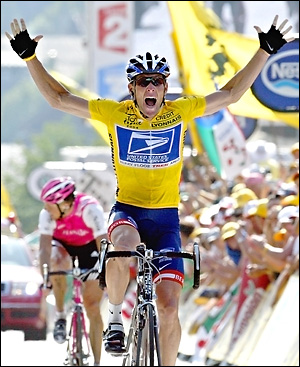If it’s been years since you’ve been on a bike, never fear, it really is as easy as riding a bike! You don't have to be like Lance to have fun!

First things first…you need a bike. Maybe you have one stored in the garage or storage locker. Maybe you don’t have a bike at all, but have decided this is the year you get back in the saddle. If you are thinking of buying new wheels this year, there are a couple of things to keep in mind while you shop:
1) The kind of riding you will be doing – do you want to ride mostly on bike paths and streets? A road bike or cruiser would do you just fine for either of those purposes. If you want to take your bike off-road on trails and jeep roads, you will need a bike with a little more meat like a mountain bike or a cyclo-cross bike. And if you are looking for a couple-friendly ride, you may want to consider a tandem bicycle.
2) How far you want to ride – if a couple of miles will do you, you may want to stick with a cruiser bike, which typically has anywhere from one to three gears. If you want to ride longer distances (10+ miles), you will want a bike with more gears. It will make the pedaling easier and reduce the strain you put on your body. Mountain bikes, road bikes and cyclo-cross bikes are all suitable for longer distances.
3) What you’re willing to spend – you can get a lot of bike for a relatively small investment – and you can get a lot of bike for a really huge investment. Plan on spending at least $700 on a good starter bike (less if you are purchasing a basic cruiser, which you can run $250-$500). The nice thing about bikes is that you can upgrade components as your skill and interest increases. You don’t have to buy top-of-the-line right off the bat…Upgrade as your budget allows. As long as your frame is solid, the rest is pretty interchangeable. You can add clipless pedals, different handlebars, different wheels, a lighter gear set, fancier breaks, a new saddle (seat) seat post, a computer to track your mileage and speed, etc.
4) Your frame – as in your body type. Many bicycle manufacturers make women-specific bikes that are adjusted to fit a woman’s body a little better (narrower handlebars for our narrower shoulders, a slightly shorter top tube because we tend to have longer legs and shorter torsos, etc.) There are also bicycles build for heavier-set people, bikes for people who cannot lean over for long, bikes for unusually tall people. Talk with someone at your bike shop.
Here’s a little information about the different types of bikes.
A quick note about buying a new bike…there are some bike shops that will allow you to demo different bikes on a “rent to own” basis. That is, each time you rent a bike, a portion of the rental fee will eventually go towards the purchase of a new bike. Also, if you keep your eyes peeled, in the Spring and Summer, many bike companies offer “Demo Days,” where they bring a bunch of bikes to an event, park or trail, and let people try the bikes out. Ask about upcoming demo days at your local bike shop. I would strongly recommend you ride as many different bikes from as many different manufacturers that you can. Even the same sized frame will feel slightly different from different manufacturers. Ride lots of ‘em and find the one that feels best for you. Even then, you would be wise to invest in a custom fit session at your local bike shop. They will look at your body on your bike and make adjustments to help you be more comfortable and injury-free! A fraction of an inch can make a HUGE difference.
Even if you already have a bike, it is a good idea to double check the fit of your bike every year or so.
Here are some bike fit tips from the experts.
And another link.
Next time, we’ll talk about getting started, what kind of events you can enter to stay motivates and other cycle-friendly tips!

Yeah, Grubby Girl is back!
ReplyDelete